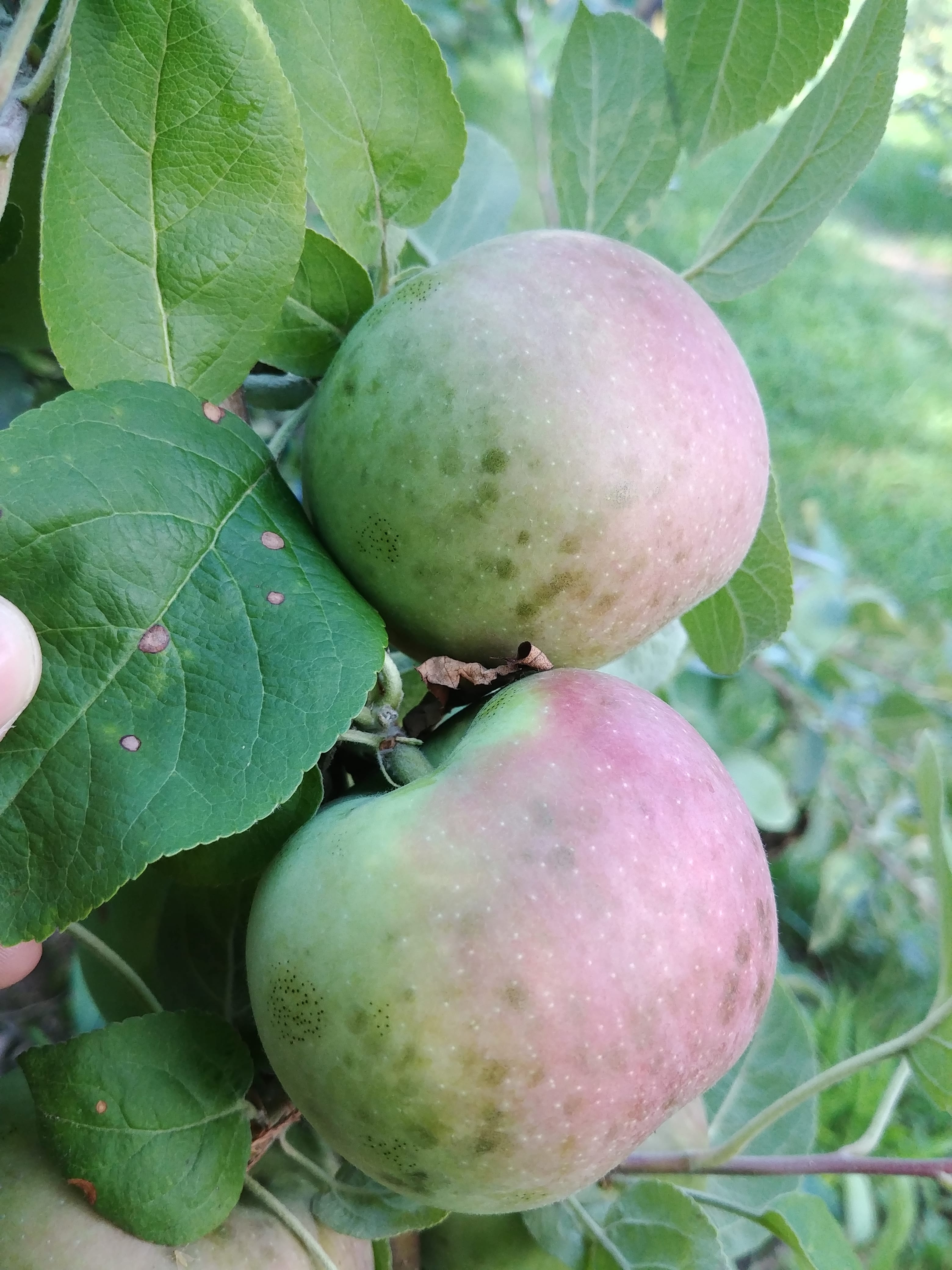Use NEWA Sooty Blotch & Flyspeck Model to Predict When First Infections Occurred/Will Occur for Your Location

Sooty Blotch and Flyspeck (SBFS) of apple are caused by a large group of fungi which grow superficially on waxy cuticle of apple fruit. Usually, flyspeck caused by Zygophiala jamaicensis shows first and then the sooty blotch appears, which is caused by a complex of species including Schizothyrium spp. Besides cosmetic issues that will reduce the price of apples, sooty blotch can also shorten fruit storage life because it allows increased water loss. We use an assumption that there is a reduced risk from this disease between petal fall (PF) and the time until an orchard accumulates 190 hours of accumulated leaf wetness hours (ALFW) counting these hours from First Cover (FC = 10 days after petal fall) and using NEWA data for your specific location. Looking for the AREC Winchester weather station data, NEWA SB&FS prediction model is now showing that with the rains of today, we have passed the 190 h ALWH on 18 May https://newa.cornell.edu/sooty-blotch-flyspeck This calls for vigilance in looking at the SB&FS model daily to determine how close you are before reaching 190 ALWH, so as to apply an effective fungicide mix just before you reach 190 ALWH. Since you have already started applying cover sprays, with first cover starting 10 days after petal fall, knowing when SB&FS fungi infect first time allows you to add in the tank mix materials highly effective against this disease. You also have an option to put in the date of your last fungicide application in the NEWA model and this will re-calculate the days of ALWH and give you a new prediction when you need to apply fungicide for SB&FS. Reaching 190 h ALWH will allow abundant flow of SBFS spores into apple orchards from surrounding woodlots or forests. The spores are coming from near-orchard vegetation in hedgerows and forest trees lots where the SBFS fungi overwinter on the waxy cuticle of canes, shoots, twigs, fruit and leaves of large number of inoculum reservoir plant hosts. From there, SBFS spores are spread to pome fruit by wind or wind borne rain aerosol drops. In a year like 2023, due to so much rain we had recently, SBFS infections can start infecting fruit as early as 2-3 weeks after petal fall. Symptom occurrence after infections are initiated is dependent on environmental factors and can take place for several weeks to months later.
Be proactive in use of NEWA model to not surpass the 190 hr of accumulated wetting from first cover. Just before the weather forecast predicts you will reach the 190-hr of accumulated leaf wetting from fist cover, start your SB&FS spray program. After you start(ed) your SB&FS program, one cover spray is worth: 14 days or 2 inches of rain, whichever comes first, but if no rain falls for 14 days, extend the spray interval to 21 days, under the condition that no rain occurs during the 7 additional days. If rain event occurs between during additional 7 days, we will apply fungicide before that rain regardless did we reach 21 days or not. In commercial orchards, we have to make sure that there is almost always enough fungicide residue to prevent SB&FS. My recommendation to use at 2nd and 3rd cover would be:
Captan 3 LB/A + Prophyt** 64 fl.oz./A or
Captan 3 LB/A + Topsin M** 1 lb/A or
Captan 2.5 – 3 LB/A + Ziram 6 lb/A or
Captan 3 LB/A or
Ziram 6 lbs/A
At 4th and 5th cover, which should be now and end of May, I would recommend the following tank mix which would be good for SB&FS, Marssonina Leaf Blotch, and bitter rot (pressure from bitter rot starts at end of May to beginning of June in Virginia):
Aprovia 5.5 – 7 fl oz (30 PHI) + Captan 80 WDG 3 lb
Other fungicides like QoI-s: Flint Extra, Luna Sensation,Pristine and Merivon, are even more effective for SB&FS and should always be combined with captan. My recommendation is to apply one tank mix with a QoI fungicide at 6th cover. Then, 6th and 7th cover spray should be done with this mix:
Omega 13.8 fl oz (28 PHI) + Captan 80 WDG 3 lb.
After that, 8th to 12th cover spray should be the following tank mixes:
8C: Pristine 14.5 oz + Captan 80 WDG 3 lb
9C: Captan 80 WDG 3 lb
10C: Merivon 5.5 fl oz + Captan 80 WDG 3 lb
11C: Captan 80 WDG 3 lb
12C: Merivon 5.5 fl oz + Captan 80 WDG 3 lb
Fruit Harvest.
